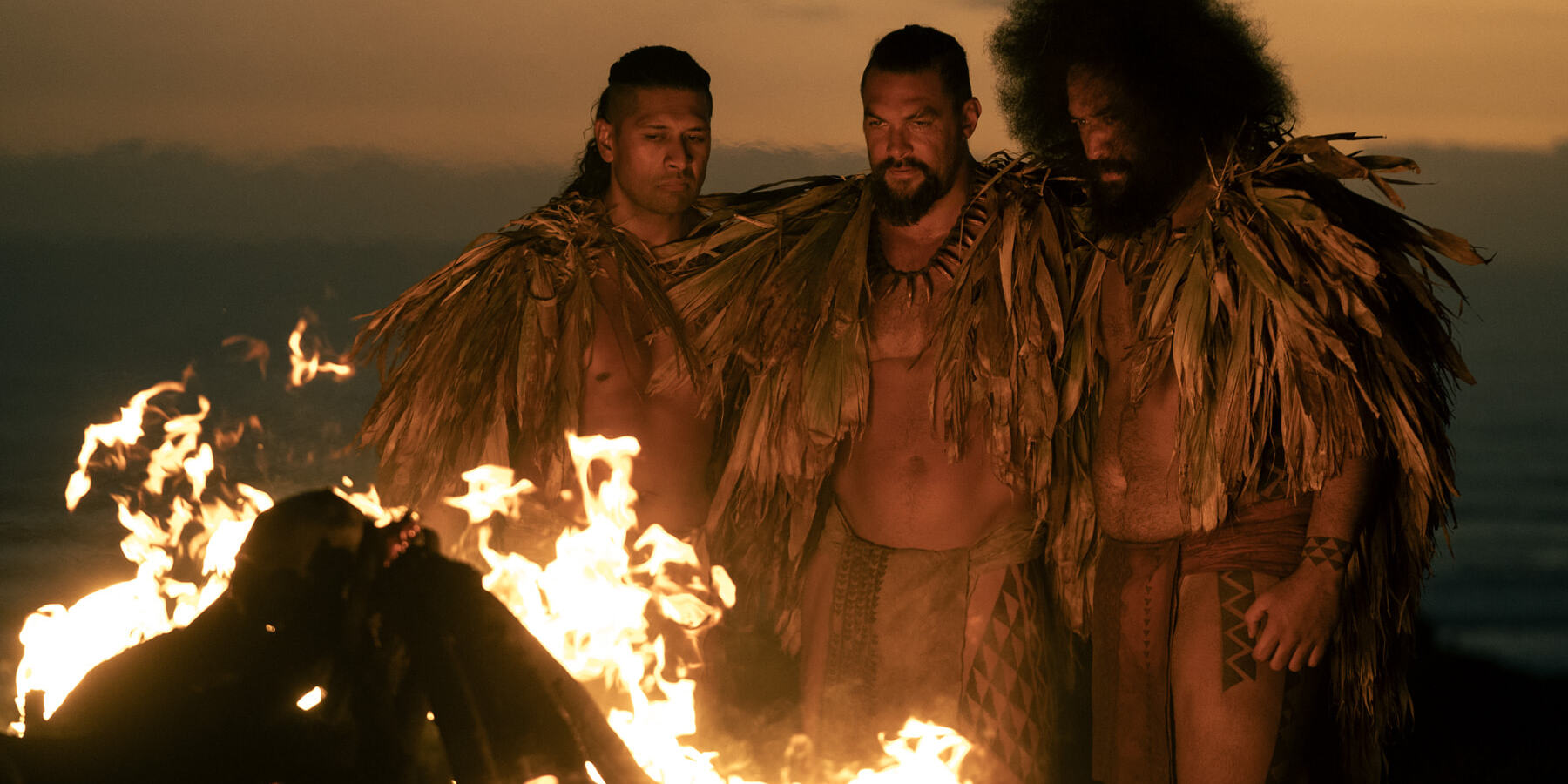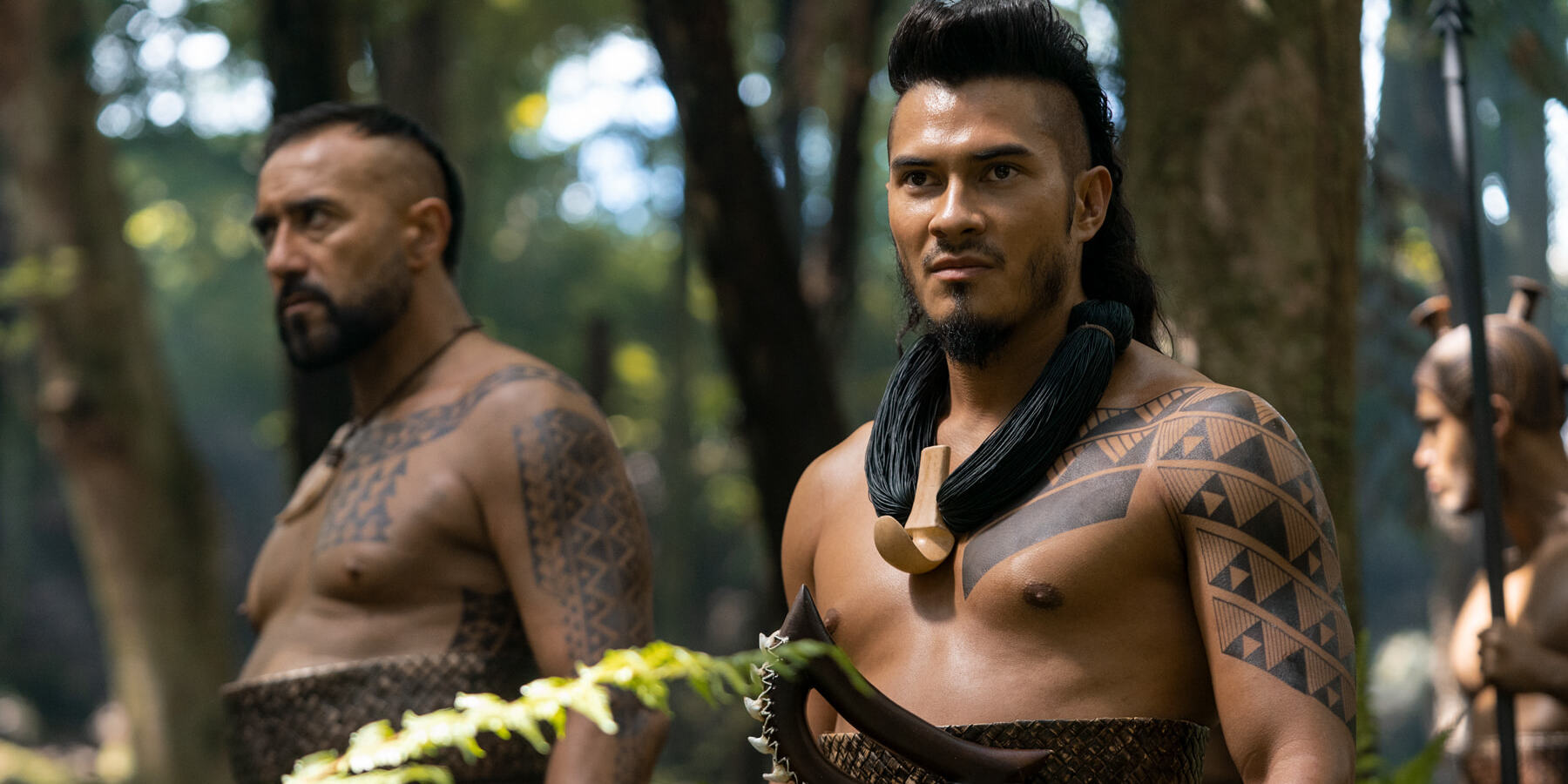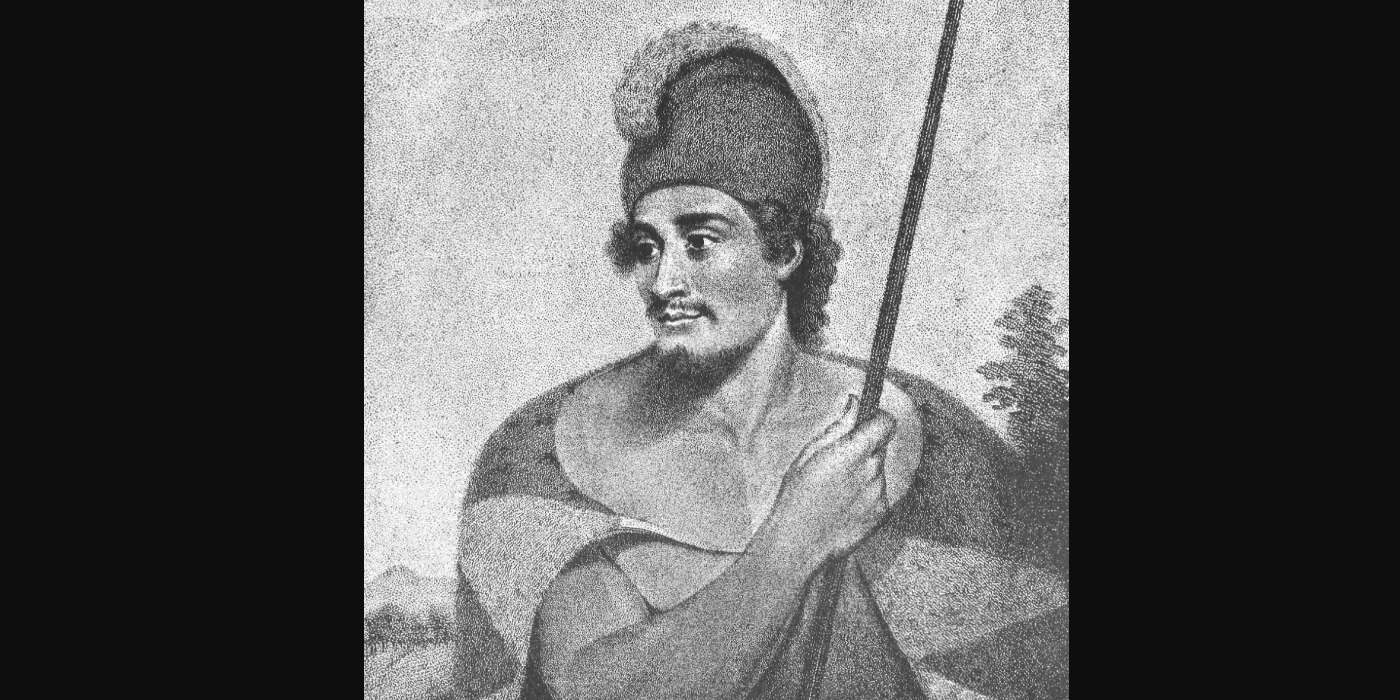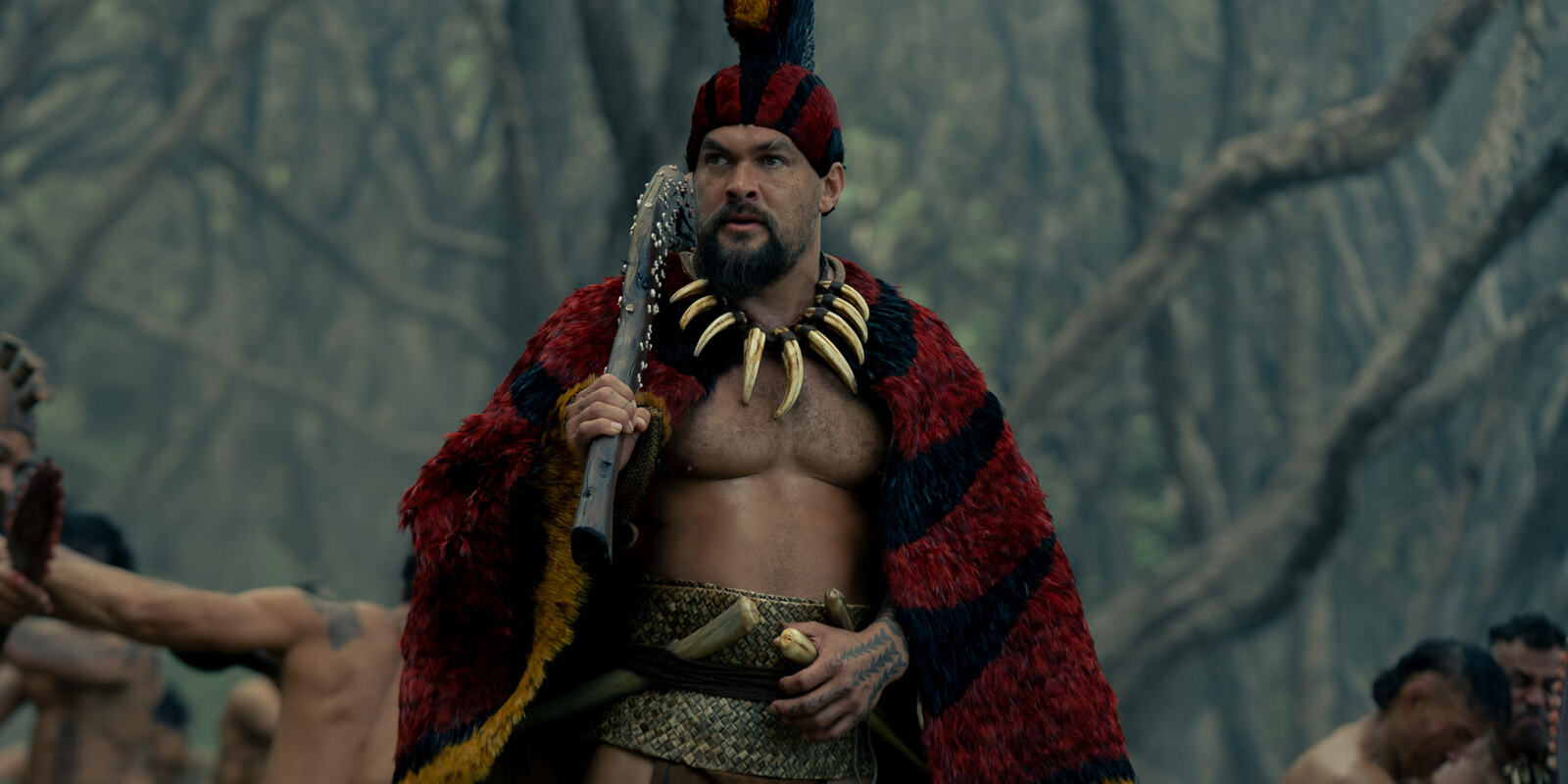The Apple TV+ drama show’ Chief of War’ delves into the history of the Islands of Hawai’i and how they were united under one front. Created by Jason Momoa and Thomas Pa’a Sibbett, the story pitches Ka’iana, a warrior and a native nobleman, as the protagonist, following his adventures through the late 18th to early 19th century. The four kingdoms of the islands, O’ahu, Maui, Kaua’i, and Hawai’i, remain entrenched in a cyclic war. As an ancient prophecy foretold, this needless violence can only come to an end under the rule of a Great King, who will pull the four nations together and unify them as one. Therefore, as the yet unidentified threat of colonization looms over the natives of the land, Ka’iana finds himself leading a charge of unification and bloodshed. The show highlights a crucial part of American history that tends to be underrepresented in both media and culture. For the same reasons, the tale’s roots in reality become a point of much intrigue.
Chief of War Tells the True Story of the Unification of Hawai’i Islands
‘Chief of War’ is a riveting tale that brings a fascinating part of history into the limelight. As a historical drama, the show remains steeped in the actual real-life past of the Hawaiian Islands, particularly how they came to be unified under one banner. Finding its start in the 18th century, the story focuses on the four island kingdoms, O’ahu, Maui, Kaua’i, and Hawai’i, and their political standings at the time. Thus, it showcases important historical figures such as Kahekilinuiʻahumanu, aka Kahekili II, the King of Maui, his son, Prince Kalanikupule, Queen Consort Ka’ahumanu, and many other personalities pivotal to the history of Hawaii and its people.

The narrative equips plenty of creative liberties with these real-life figures, creating characterizations for them in accordance with the storyline. Still, their core socio-political identities, actions, and relationships remain kindred to their historical footprints. The show dives into the reality of the warfare that existed among the four kingdoms and their noble families. Furthermore, it touches upon the Hawaiian legend that prophesied the birth of a great chief. In turn, it also includes the story of the foretold leader, widely believed to be King Kamehameha. Naturally, as a result of its period setting, the show also dives into the tragic reality of the Indigenous kingdoms and their history with European colonizers.
In a conversation with ABC Pacific, Cliff Curtis, actor and co-producer on the project, spoke about the significance of portraying the tense dynamic between history’s reality and the authenticity of indigenous cultures. Discussing the theme’s persisting relevance to the modern world, he said, “We’re all struggling with the same things, are we? Even today, geopolitically, nations in the world are struggling with the idea of colonisers, oppression. How do we find our boundaries as a nation?” He further added, “Should we have a right to exist as indigenous cultures? Or should we be homogenised, and have our language stripped from us, and only speak one language? I mean, these are the great struggles of us in contemporary times.”
Chief of War Depicts Indigenous Hawaiian Cultures With Authenticity
One of the most crucial aspects of ‘Chief of War,’ which informs its sense of realism, comes from the show’s depiction of the different Hawaiian cultures. The story employs realistic wardrobe design, as well as authentic Indigenous languages, to create the world around the characters. Creators Jason Momoa and Thomas Pa’a Sibbett partnered with Jason Momoa and Thomas Pa’a Sibbett Awaiaulu during the writing process of the project. As an organization dedicated to developing resources around knowledge about the Hawaiian language, Awaiaulu was able to ensure the screenwriting of the show employs maximum authenticity in its employment of the Ōlelo Hawai’i language.

This, paired with the realistic depiction of the Hawaiian culture across the four islands, was crucial in ensuring the creators fulfilled their visions for the project. From the beginning, Sibbett, Momoa, and the rest of their team were eager to bring this story to the screen to showcase the reality of their cultural Indigenous history. Sibbett discussed the same and said, “This (story) is our cultural background; it’s our heritage; it’s the faces of our people. I think because of that, there’s always a search for representation, like, where are we? So for us, it just became something that we just wanted to see, we wanted to experience, and let the world experience a little bit of how we see ourselves.”
Ka’iana is an Actual Historical Figure Hailing From Hawai’i
Jason Momoa and Thomas Pa’a Sibbett came up with the idea for ‘Chief of War’ as a project focused on Hawaii’s history in 2015. Initially, they considered the idea of centering the tale around King Kamehameha. The latter led the charge for the unification of the Islands and has long been believed to be the prophesied Great King of Hawai’i. Nonetheless, the creators realized that the King’s revered cultural perception among the Hawaiian people would complicate the narrative’s ability to properly dig into the good and bad of his life. Eventually, Ka’iana, the first Hawaiian Chief to traverse abroad, emerged as the perfect protagonist.

In real life, Ka’iana, believed to be raised in Oʻahu, was a known nobleman (or aliʻi) and a warrior chief. He was also considered by many to be the most famous Hawaiian, thanks to his voyages outside of the islands. Historical reports suggest the war chief set sail aboard Englishman John Meares’ ship, Nootka, in 1787. The Hawaiian chief was welcomed on the ship as a guest of the captain. Although the reasons behind his interest in international travel remain unknown, he is known to have travelled far and wide. China, the Philippines, and the Northwest Coast of America were some of the places he visited, accompanied by different captains and their ships. Eventually, upon his return, he came back to the Islands with weapons and ammunition, which ultimately contributed to his involvement in fighting for Kamehameha I and his campaign.
However, Ka’iana was also known for his shifting allegiance. Yet, regardless of which leader he fought for, he mostly remained consistently tied to his two half-brothers, Namakeha and Nahiolea. Thus, for the most part, Ka’iana’s on-screen character remains faithful to his historical counterpart. Even so, there are certain instances in which his storyline entertains some artistic liberty. For instance, in depicting Ka’iana’s history with King Kahekili and his foray onto John Meares’ ship, the show takes some leaps in chronology and perceived motivation. Nonetheless, any such changes are made in service of the overall narrative. Ultimately, the protagonist’s characterization remains tied to his real-life counterpart, adding to the historical significance of the narrative.
Read More: Is House of Lies Based on a True Story?


You must be logged in to post a comment.